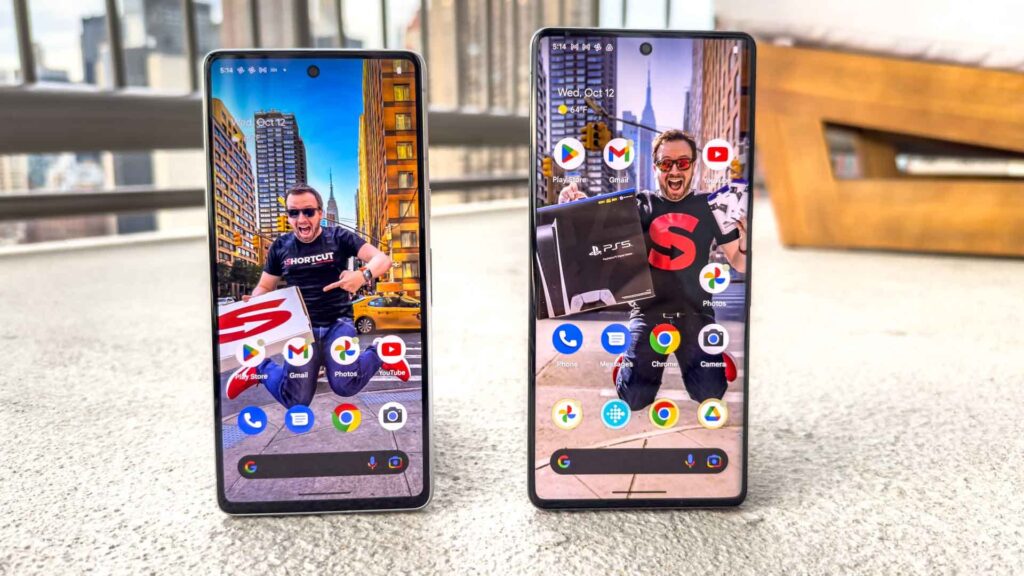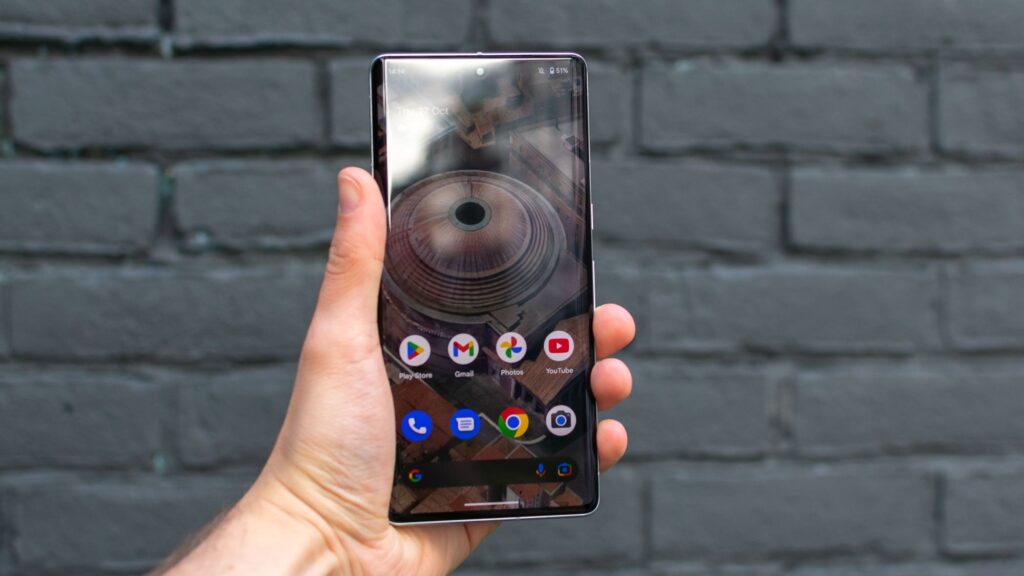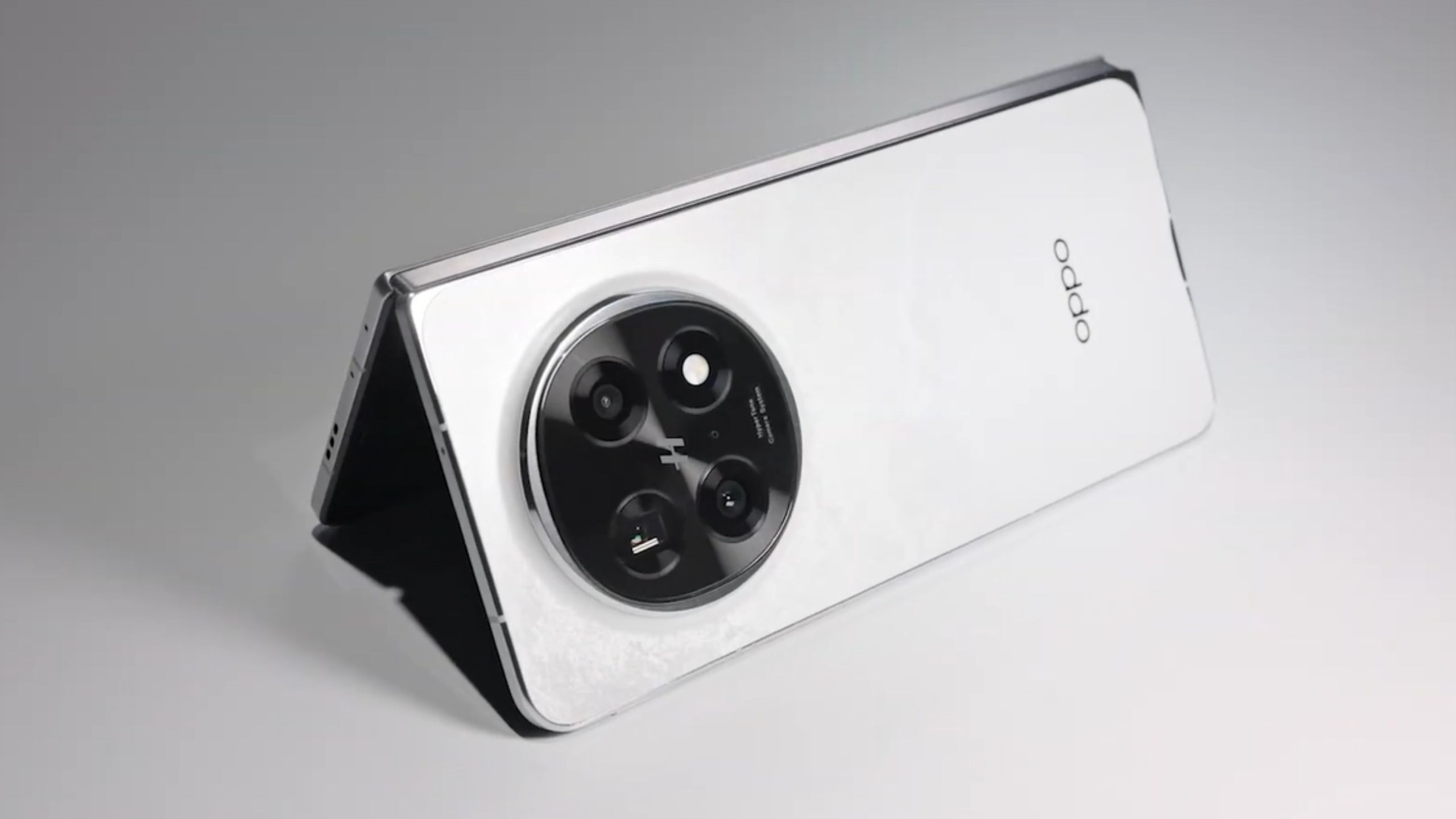Google Pixel 7/Pro Review: The Ultimate Android Experience
February 23, 2025 | by ranazsohail@gmail.com
I’ve been using the Pixel 7, 7, and 7 Pro for about a week now. They’re pretty similar to last year’s models and the prices haven’t changed either. But honestly, what really stands out this time around is how much the Pixel leans on software to fix hardware issues. It’s a different approach compared to brands like Samsung or Xiaomi, who just throw as much hardware at the phone as possible. There’s no denying that raw power can make a difference, and neither approach is necessarily better or worse—both have their strengths. But for me, there’s something a little magical about how well the software works, when it’s done right.
I also really appreciate the small hardware updates to the Pixel. Even though it’s not the core of Google’s mission, the design changes do matter to users. When I first held the phone, I wasn’t totally sold on the design, but it’s definitely growing on me. The most obvious update is the metal camera bar, which replaces the glass visor from last year. This gives it a sleeker look, and it also lets them unify the design with the metal frame that wraps around the rest of the phone. The Pixel 7 Pro gets polished aluminum, while the regular Pixel 7 has a matte finish.
Both phones also have brighter displays this year—1,500 nits peak brightness on the 7 Pro and 1,400 nits on the Pixel 7. You can’t replicate that with software, so it’s a nice upgrade. The 7 Pro’s display is also larger, slightly curved around the edges, and generally looks better with less off-axis rainbowing. One thing I found interesting, though, is that the 7 Pro comes with its 1440p panel set to 1080p by default. I switched mine to 1440p immediately, and I haven’t noticed any battery issues since. Honestly, if you get one, I’d suggest doing the same. Speaking of battery, I’ve had great experiences with it so far.
I’ve mostly been using the 7 Pro, and David in the studio’s been using the regular 7. Both phones have been fantastic. Just this morning, I had a one-hour commute into the studio with Waze on full brightness, GPS running, and streaming Spotify to my car via Bluetooth. By the time I got to the studio, I still had about 85% battery left. I usually end my day with around 30 to 40% battery left, even after six to seven hours of use. The battery life on these phones is really impressive, and I think it’s a mix of great software optimization, better modems, and more efficient chips.

There aren’t many new specs in the phone’s chip, but the second-generation Tensor G2 from Google is a standout. The Pro model also gets a bit of extra RAM. The G2 does perform a little better than the first Tensor in benchmarks, but in terms of raw power, it’s pretty much on par with the Snapdragon 865, which is fine. But, like I mentioned in my “Problem with Benchmarks” video (check it out if you haven’t), Google has really fine-tuned the Tensor G2 to work efficiently with its AI features.
While the G2 is a bit quicker than the original, thanks to its 4-nanometer process, the real improvements come in how it handles machine learning. It’s now 60% faster and 20% more efficient, so AI tasks are noticeably quicker and more responsive. That’s where the real gains are. Of course, there are small improvements across the Pixel overall too. For example, they’ve even color-matched the inside of the port and speakers to the phone, which is a nice little detail.
But let’s be honest, the Pixel isn’t about hardware—it’s all about the software. The Pixel is probably the smartest phone out there, and most of the reasons you’d pick a Pixel 7 over other phones come down to software. Take phone calls, for example: the Pixel is the only phone with call screening, and it’s still incredibly useful to me. Plus, there’s the enhanced Direct My Call feature, which takes things to another level. It shows all the options for navigating an automated phone system at once, so you can press the buttons even before the robot finishes telling you what to do. It’s a huge time-saver.
I also really like the new home screen search. It still does everything it did before, but now it’s cleaner and more polished. And with the updated selfie camera, you also get AI-based face unlock, which is pretty cool. It’s fast when conditions are good, but since it’s just a single camera and lacks infrared or depth mapping like Face ID, it can struggle in the dark or if you’re wearing a mask.
The Pixel 7 still has the under-display fingerprint reader for dual biometric authentication, which kicks in when face unlock fails. Honestly, I was hoping they’d improve this from the Pixel 6 since the fingerprint sensor in that phone was a bit of a letdown. It’s fine, but it’s not any faster or noticeably bigger. It’s still a bit behind ultrasonic readers, which are much quicker than this optical one.
Now, the Recorder app is something I have to mention, even if it’s not a dealbreaker for everyone. It’s better than ever. It was already top-notch at fast and accurate speech-to-text, thanks to Tensor, but I saw a demo that blew me away. Someone started recording, put the phone in their pocket, and we had a whole conversation. When they pulled the phone out, the app had perfectly transcribed everything, even labeling who was speaking. It’s pretty amazing, or maybe a little creepy depending on how you feel about it. This feature is set to arrive in an update later this year, and I’m definitely going to use it.
The Google Assistant experience is still fantastic too. Just like with the last Pixel, it feels like the Assistant is always around, ready to help when you need it. Android 13 adds some nice improvements with Material You and other backend updates, but the real magic is in all the Google features that make life a little easier—routines, reminders, message chips, and helpful suggestions pop up everywhere.
And then there’s Photo Unblur. If you’ve seen the demos, you know it’s pretty impressive. It works on any photo in your Pixel 7’s library, or even your entire Google Photos collection. If a photo is a little blurry, you just hit the unblur button, and AI kicks in to fix it. It’s like magic, removing the blur and making the image sharper. Pretty cool, right?
After experimenting with a bunch of photos, I found that the feature works best when the subject is in focus but there’s some motion blur due to a long exposure. In those cases, it really does a solid job of cleaning up the streaks and making the photo look way more usable. It’s not magic, but it’s pretty impressive. It’s a clear example of how software can solve hardware problems.
Google says this feature is exclusive to the Pixel 7 for now, citing the Tensor G2 chip as the reason. Personally, I’m not convinced. I’d guess that within a year, this feature will be available on other phones, maybe even for anyone using Google Photos. But for now, if you want in on it, you’ll need the Pixel 7.
The bigger takeaway here is that Google isn’t trying to make the phone with the absolute best hardware, the best display, or the best raw power. If that’s their goal, they’re not quite hitting it. But what they are doing is making the smartest phone on the market. The Pixel 7 is without a doubt the smartest smartphone out there, and this year, it’s even more true than before.
And of course, the Pixel’s cameras have always been a standout, and the Pixel 7 keeps that tradition alive with updated front and rear lenses. The 50-megapixel main camera is the same on both models, but the Pro gets a new, wider ultrawide camera with autofocus, while the standard 7 keeps the previous model. The Pro also adds a 48-megapixel, 5x telephoto lens. As expected, both the Pixel 7 and 7 Pro take stunning photos in all kinds of lighting, with that signature Pixel style—lots of contrast, great detail, and high dynamic range.

This large sensor does a fantastic job of creating a natural depth of field, even without using portrait mode, which I really appreciate. I know I shouldn’t be so impressed that daylight photos look great on the Pixel, but honestly, these shots are just really good. And the new Pro ultrawide lens does an awesome job with macro shots. It doesn’t do macro video, but I managed to get this shot of an ant, which can be surprisingly tricky.
You can also disable the automatic switch to macro mode if, like me, you prefer using the main camera for close-ups. Just keep an eye on the minimum focus distance.
Here’s another cool example of how software can solve hardware limitations: the zoom. The 1x camera is the standard, using a 50-megapixel sensor that bins down to 12 megapixels. The 2x zoom is a high-quality 12-megapixel crop of the center of the frame. From 2x to 5x, the camera cleverly blends in detail from the telephoto lens and combines them, which works pretty well. At 5x, the camera switches over to the full telephoto lens, which makes total sense.
At 10x, it takes another 12-megapixel crop from the middle of the telephoto lens, giving you a sharp zoom. It’s not quite as sharp as a dedicated 10x telephoto lens, though. Having a dedicated lens would definitely deliver better image quality. But for someone like me who doesn’t zoom that often, the Super Res Zoom software does a solid job and helps save some money.
Lastly, the zoom stabilization kicks in at 15x, and it’s surprisingly stable. Maybe even a little too stable, as it can make it harder to track moving objects—especially if you’re into bird watching… or, you know, creeping.
The Pixel’s camera is still one of the best when it comes to point-and-shoot on Android. The shutter speed is super quick, so if you’re trying to catch fast-moving moments or freeze a specific instant, it nails it.
The selfie cameras have also been bumped up. Both the Pixel 7 and 7 Pro now have an 11MP selfie camera and do ultrawide selfies, which used to be a Pro-exclusive feature. Video’s gotten a little better too, with 10-bit HDR support. It’s tough to see it in this SDR video, but if you’ve seen HDR video before, you’ll know it shines with bright highlights and a ton of dynamic range. It’s still a little behind the iPhone in terms of noise reduction and autofocus, which is why I still think the iPhone is the overall winner for smartphone cameras. But the Pixel’s really close, and that’s saying a lot.
A couple of other little things that didn’t quite fit elsewhere: The speakers on the Pixel 7 Pro are a little louder than the 6 Pro but don’t have as much bass. So, it’s got less of that low-end rumble, but the vocals come through clearer, which is interesting.
As far as sustainability goes, the phones are a bit better. The metal visor and frame are made from 100% recycled materials, which is nice. The packaging, while still not including a charger, does come with a cable and adapter, and everything is in recyclable cardboard.
Now, onto the question that’s on everyone’s mind: are there bugs? After the Pixel 6, which started off great but eventually got riddled with issues, I was curious about the Pixel 7’s performance. So far, I’ve noticed a few bugs. For example, the media player bug where it just shows a blank space where the player should be. It went away after a reboot. There was also a weird thing where the ‘X’ to close the Google search bar disappears but is still pressable, which was super strange. And, I tried to post an Instagram story from the Pixel 7 Pro the other day, and it just glitched out for no reason. I have no clue what happened, but it was visible to everyone.
RELATED POSTS
View all


